( – promoted by navajo)
Jacques Cartier began his exploration of Canada on behalf of the King of France in 1534. The exploring expeditions of Jacques Cartier in the sixteenth century provide us with some insights about the First Nations at this time.
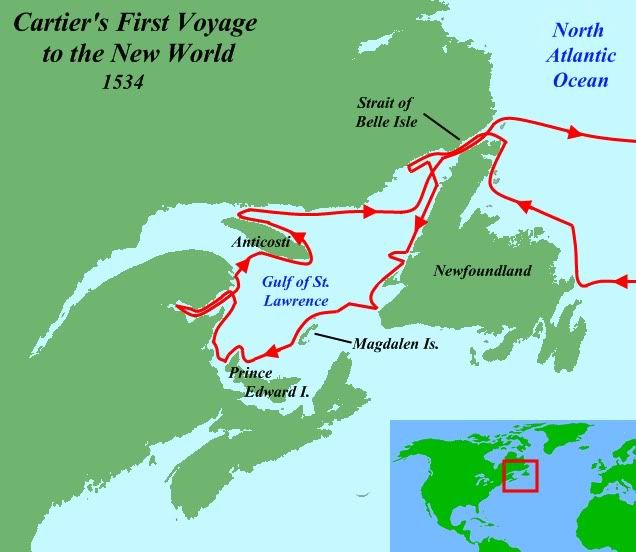
Micmac:
The French first encountered the Micmac at Chaleur Bay. The Micmac greeted his ship with two fleets of canoes, totaling 40-50 canoes in all. With so many Indians, Cartier was afraid to make contact and fired light artillery to frighten them away. The following day, nine canoes once again approached his ship. The Micmac held up furs showing that they wanted to trade and indicating that they had encountered Europeans before and knew what they wanted. Cartier sent two men ashore with knives and other iron goods and a brisk trade occurred. In some instances, the Indians literally traded the clothes they were wearing.
Beothuk:
The French explorers also had some limited contact with the Beothuk. Cartier described their practice of rubbing red ochre over their bodies, hair, clothing, and other items. This practice, which had been described by earlier explorers and fisherman, led to the description of American Indians as “red.”
Iroquois:
Cartier encountered a group of 300 Iroquois at the Baie de Gaspé. The Iroquois had come down the Saint Lawrence River from the present-day Quebec area to fish for mackerel. He noted that they slept underneath their overturned canoes and wore only breechcloths and a few skins over their shoulders. They welcomed the French with songs and dances. They were eager to get hold of the knives, combs, and other small articles that the French had with them. The French described them as marvelous thieves.
The French took symbolic possession of the territory by raising a large cross on a little island in Gaspé Harbor. Some historians report that Chief Donnacona objected to this. He went out to Cartier’s ship and harangued the navigator from his canoe. He pointed to the cross and then to the ground, making it very clear that Cartier and the French were trespassers.
The French kidnapped two of the sons of the leader of the fishing party, Donnacona, and took them back to France. In France, these two young men gave glowing accounts of the mythical kingdoms of Hochelaga, Stadacona, and Saguenay which aroused more French interest in the New World. The French interpretation of their stories suggested that North America might offer riches comparable to those of Mexico and Peru.
It is hard to say if the young men were deliberately misleading the French, or if the French were hearing what they wanted to hear. Cultural differences often lead to misinterpretation. While the Iroquois did not have kings, and therefore did not have kingdoms, the French, like other Europeans often assumed “kings” and “kingdoms” where none actually existed.
Cartier returned to Canada in 1535 with three ships. He intended to establish a colony which would remain in the land through the winter. He stopped at the Iroquois village of Stadacona where the city of Quebec would later be built. He continued to follow the St. Lawrence and reached the fortified Iroquois town of Hochelaga with a population estimated at 3,600 living in fifty longhouses. The Iroquois of Hochelaga were described by the French explorers as the overlords of the Canadian Iroquoians, as well as eight or nine other nations.
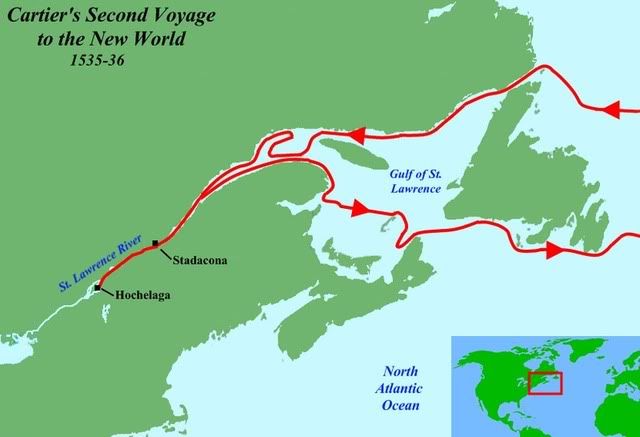
Upon returning to Stadacona, the Iroquois leader Donnacona offered Cartier and his men every hospitality, but Cartier insisted on building a fort for security.
During the winter, Cartier’s men became sick with scurvy. While the Stadaconans also became sick, the French noticed that the Indians recovered fairly quickly. In desperation, Cartier asked the Stadaconans how they had healed themselves and was told that the leaves of a certain tree were the remedy for the disease. Asking for help for “a servant” (Cartier was reluctant to let the Iroquois know how many of his men were sick), the Indians showed him how to boil the bark and leaves of the tree. At first, the French refused to try the concoction, but after one or two finally tasted it and quickly improved, all of them took it. Within a few days, his men were better. With their herbal medicine, the Indians were apparently more advanced than the French.
While Cartier reported that the healing tree was the Sassafras tree, Sassafras did not grow in that climate. Many people today feel that the tree was white pine, hemlock, or spruce.
At the town of Hochelaga a thousand Huron greeted the French explorers. The French noted that a wooden palisade for defense enclosed the town. Around the town were large fields of corn. The French did not care for the Huron food – cornbread, beans, peas, and cucumbers – because it was not salted.
When Cartier left for France in 1536, he kidnapped Donnacona and nine others. None of the captives lived to see their homeland again.
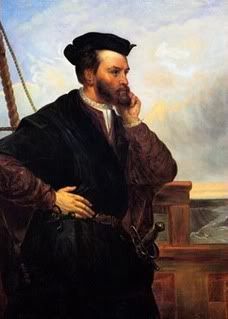
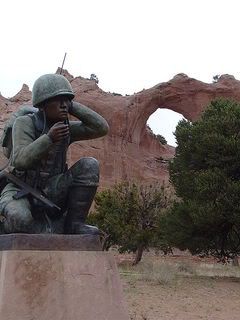
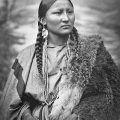
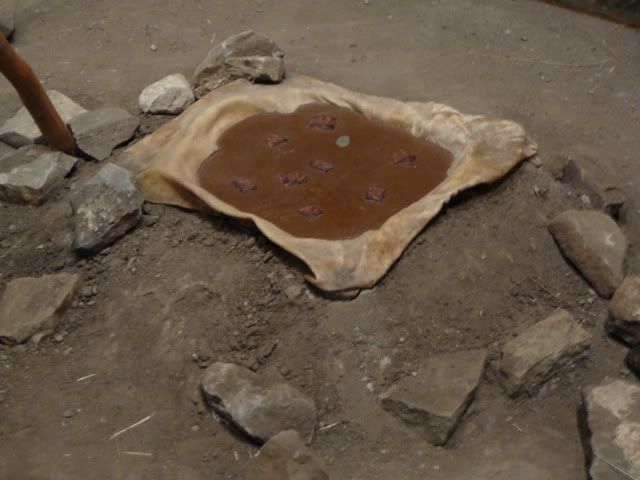
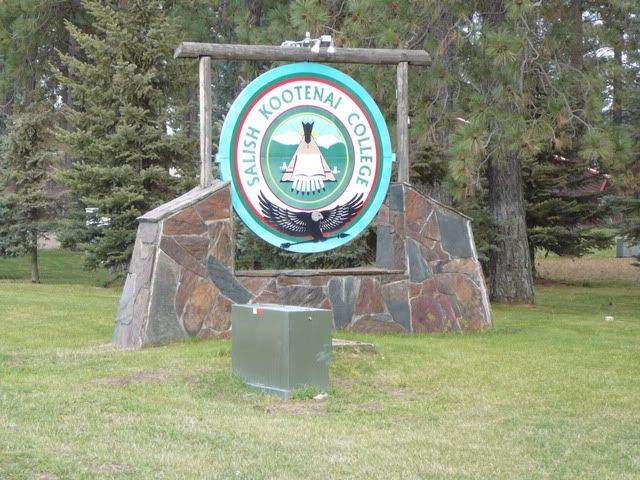
Leave a Reply